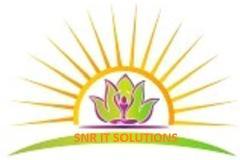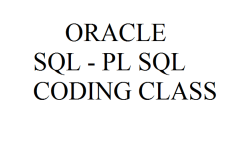I will be teaching oracle sql fundamentals and it will start from very basic to advanced topics .
This course will help you to get much knowledge on sql for an oracle platform and the sql topics mentioned under OCA certification all will be covered.
| Retrieving Data using the SQL SELECT Statement | - Explain the capabilities of SQL SELECT statements - Execute a basic SELECT statement |
| Restricting and Sorting Data | - Limit the rows that are retrieved by a query - Sort the rows that are retrieved by a query - Use ampersand substitution to restrict and sort output at runtime |
| Using Single-Row Functions to Customize Output | - Describe various types of functions available in SQL - Use character, number, and date functions in SELECT statements |
| Using Conversion Functions and Conditional Expressions | - Describe various types of conversion functions that are available in SQL - Use the TO_CHAR, TO_NUMBER, and TO_DATE conversion functions - Apply conditional expressions in a SELECT statement |
| Reporting Aggregated Data Using the Group Functions | - Identify the available group functions - Describe the use of group functions - Group data by using the GROUP BY clause - Include or exclude grouped rows by using the HAVING clause |
| Displaying Data From Multiple Tables | - Write SELECT statements to access data from more than one table using equijoins and nonequijoins - Join a table to itself by using a self-join - View data that generally does not meet a join condition by using OUTER joins - Generate a Cartesian product of all rows from two or more tables |
| Using Subqueries to Solve Queries | - Define subqueries - Describe the types of problems that the subqueries can solve - List the types of subqueries - Write single-row and multiple-row subqueries |
| Using the SET Operators | - Describe set operators - Use a set operator to combine multiple queries into a single query - Control the order of rows returned |
| Manipulating Data | - Describe each data manipulation language (DML) statement - Insert rows into a table - Update rows in a table - Delete rows from a table - Control transactions |
| Using DDL Statements to Create and Manage Tables | - Categorize the main database objects - Review the table structure - List the data types that are available for columns - Create a simple table - Explain how constraints are created at the time of table creation - Describe how schema objects work |
| Creating Other Schema Objects | - Create simple and complex views - Retrieve data from views - Create, maintain, and use sequences - Create and maintain indexes - Create private and public synonyms |






